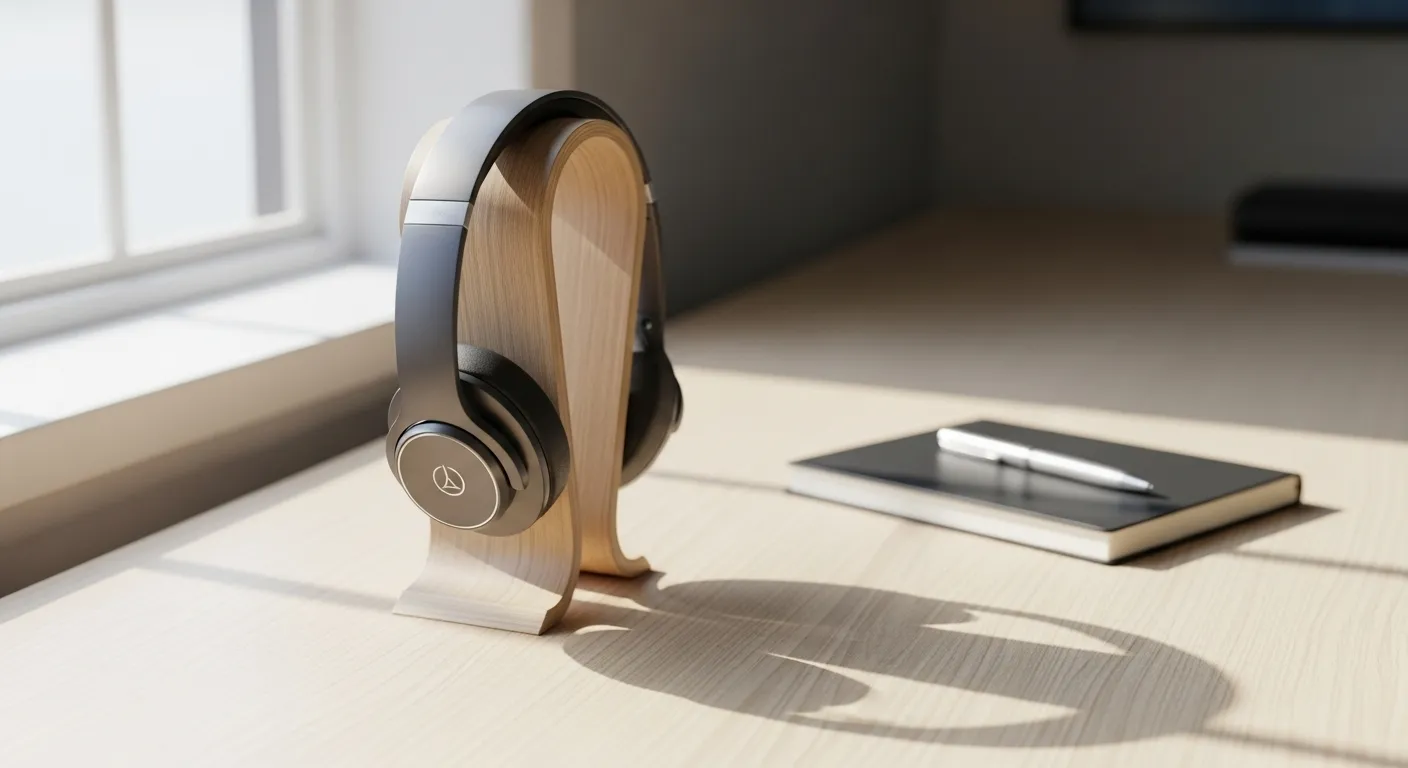
Does your day ever feel like a battle for your own attention? You sit down with a clear goal, ready to dive into important work. Then it begins. A notification buzzes. An email alert flashes. A news headline beckons. Suddenly, an hour has passed, and you’re caught in a web of digital distractions, your primary task untouched. The mental friction is exhausting. You feel pulled in a dozen directions, and the resulting overwhelm makes it even harder to start.
You are not alone in this struggle. Our modern world is practically designed to fracture our focus. But what if the very device that so often causes the distraction could become your most powerful ally in reclaiming it? It can. Your smartphone is packed with features designed not just for connection, but for concentration. You don’t need another app or a complex system. You just need a new approach.
This is not another article scolding you about screen time or telling you to abandon your technology. Instead, this is a practical guide to transforming your relationship with your phone. We will explore simple, powerful rituals that leverage your phone’s built-in settings. These are not drastic changes. They are small, intentional adjustments that create the mental space you need to think clearly, work deeply, and end your day feeling accomplished instead of drained.
We’ll move beyond a simple “turn on Do Not Disturb” command. You will learn how to create a supportive digital environment that respects your energy and attention. We will build a system of focus rituals for every part of your day, from your morning startup to your evening shutdown. Forget willpower. We’re going to build a framework that makes focus the path of least resistance. Let’s begin the journey to more mindful tech use and a calmer, more productive mind.
📚 Table of Contents
- The Attention Model: Why Your Brain Struggles with Distraction
- Your Focus Rituals: Using Phone Settings Intentionally
- The Morning Startup Ritual: Setting the Tone for Your Day
- The Deep Work Entry Ritual: Crossing the Threshold into Focus
- Break Hygiene Ritual: Restoring Your Energy Intelligently
- The Shutdown Ritual: Disconnecting for True Recovery
- Your 20-Minute Focus Starter Pack
- Mental Models: The Thought Tools for Lasting Focus
- Reframe Perfectionism: Aim for “Good Enough” Days
- Increase Friction: Make Distraction a Deliberate Choice
- Script Your Reset: How to Recover After Derailment
- Worked Examples: Focus Rituals in the Real World
- Frequently Asked Questions About Focus and Technology
- Is it good to listen to music or white noise while I work?
- Isn’t multitasking a necessary skill in today’s world?
- What should I do when my motivation completely disappears?
- How can I use my phone mindfully in the evenings without it ruining my sleep?
- Your Seven-Day Focus Challenge
The Attention Model: Why Your Brain Struggles with Distraction
Before we can fix a problem, we need to understand it. The constant battle for focus isn’t a personal failing. It’s a mismatch between our ancient brain wiring and our hyper-modern environment. Your brain evolved to pay attention to novelty and change. That rustle in the bushes could have been a predator. That flash of movement could have been prey. Your survival depended on your ability to react to new stimuli instantly.
Today, digital notifications are the rustle in the bushes. Each buzz, beep, and banner hijacks that same ancient survival instinct. It creates an “attention tax” every time you’re pulled away from your primary task. This is known as context switching. Context switching is the process of moving from one unrelated task to another. Think of it like a computer closing one program to open another. It takes time and processing power. Your brain works the same way. Every time you switch from a report to an email and back again, you lose momentum and burn precious mental energy.
This leads to an increase in what neuroscientists call cognitive load. Cognitive load refers to the total amount of mental effort being used in your working memory. When you’re trying to hold your main task in your head while also processing notifications, social media updates, and random thoughts, your cognitive load becomes overwhelming. It’s like trying to have five conversations at once. The result is mental fatigue, more errors, and the feeling that you’re busy all day but accomplishing very little.
Research consistently shows that our brains are not built for this kind of rapid, continuous switching. The American Psychological Association (APA) highlights studies demonstrating that so-called multitasking is a myth; what we are actually doing is switching tasks very quickly, which comes at a significant cost to both speed and accuracy. You can explore more on general psychological principles at the APA’s homepage: https://www.apa.org. The only way to combat this is to protect your attention fiercely. We do this by embracing monotasking. Monotasking, or single-tasking, is the practice of dedicating your focus to one task at a time.
This is where mindful phone use becomes a superpower. By intentionally using your phone’s settings, you create a digital fortress around your attention. You decide what gets in and when. This allows you to work with your brain’s natural rhythms, not against them. Our energy and focus operate in cycles, typically lasting around 90 minutes. After a period of intense focus, our brain needs a short break to recover and consolidate information. By scheduling our work and breaks, we can honor these rhythms. This leads to a state of deep immersion known as flow. Flow is a mental state where a person is fully absorbed in an activity, characterized by energized focus and enjoyment in the process. It’s in this state that we do our best, most creative, and most efficient work. The rituals we are about to build are all designed to reduce context switching, manage cognitive load, and make it easier to enter a state of flow.

Your Focus Rituals: Using Phone Settings Intentionally
Theory is one thing; practice is everything. Now we’ll build the core of your new focus system. These are four distinct rituals for the key transition points of your day: starting up, entering deep work, taking a break, and shutting down. Each ritual uses your phone’s built-in features to create boundaries and support your attention. You don’t need to implement them all at once. Start with the one that feels most needed.
The Morning Startup Ritual: Setting the Tone for Your Day
How you start your morning often determines the trajectory of your entire day. If the first thing you do is grab your phone and scroll through a flood of emails, news, and social media notifications, you begin your day in a reactive state. You’re immediately responding to other people’s agendas. Your cognitive load is high before you’ve even had a chance to set your own priorities. A startup ritual reclaims this crucial time.
The goal here is to create a 30-to-60-minute buffer of proactive, focused time before the digital noise comes rushing in. Use your phone’s “Focus” mode (on iOS) or “Digital Wellbeing” features (on Android). Create a custom mode called “Morning” or “Startup.” Configure it to block all notifications except for alarms or calls from your most important contacts. This mode should be scheduled to run automatically from the time you wake up until a designated “work start” time, for example, 8:30 AM.
During this protected time, your phone becomes a tool for intention, not a portal for distraction. You can use it to listen to a guided meditation, a calming playlist, or an inspiring podcast. You can open a journaling app to write down your top three priorities for the day. By using your phone in this deliberate way, you are training your brain to see it as a tool you control. You are starting your day from a place of clarity and purpose, with your cognitive resources fresh and ready for the important work ahead. You decide when the world gets your attention, not the other way around.
The Deep Work Entry Ritual: Crossing the Threshold into Focus
Deep work requires a clear transition. You can’t just jump from a chaotic inbox into complex problem-solving and expect to hit a state of flow immediately. You need a short routine that signals to your brain: “It is now time to concentrate fully.” This is your deep work entry ritual, and your phone is its most important gatekeeper.
First, identify a 60-to-90-minute block in your schedule for an important task that requires your full attention. When it’s time to begin, activate another custom Focus mode. Call it “Deep Work” or “Focus Time.” This mode should be your most restrictive. Silence all notifications from every single app. The only exceptions might be calls from a partner or a child’s school—the true emergencies. Many phones allow you to create a custom home screen for a specific Focus mode. For your “Deep Work” mode, create a home screen that is completely blank or contains only essential tools like a calculator or a notes app. This removes the visual temptation to open distracting apps.
Next, use your phone’s timer. Set it for the duration of your focus block, perhaps 75 minutes. The act of setting a timer creates a container for your work. It provides a clear start and end point, which can help overcome the initial resistance to getting started. Finally, and this is crucial, place your phone physically out of arm’s reach. Put it on a shelf across the room or in a drawer. Out of sight truly is out of mind. This small amount of physical friction makes it much less likely that you’ll mindlessly pick it up. This ritual systematically eliminates external distractions and internal temptations, creating the perfect conditions for monotasking and achieving flow.
Break Hygiene Ritual: Restoring Your Energy Intelligently
What you do on your break is just as important as the deep work itself. The purpose of a break is to rest your brain and restore your capacity for focus. Mindlessly scrolling through social media or news feeds does the opposite. It bombards your brain with new information, heightens your cognitive load, and makes it harder to return to your primary task. This is where good break hygiene comes in.
When your deep work timer goes off, resist the urge to immediately check everything. Instead, use your phone for something genuinely restorative. Turn off your “Deep Work” focus mode and perhaps switch to a “Break” mode, which might allow notifications from personal messaging apps but keep work-related ones silenced. Set another timer for 10 to 15 minutes. This is your dedicated break time.
During this time, stand up and move away from your desk. You could use your phone to listen to a favorite song while you stretch. You could step outside and use your phone’s camera to take a picture of something in nature. You could call a friend or family member for a quick chat. The key is to engage in an activity that is low in cognitive demand and different from the work you were just doing. Avoid activities that create loops of endless, passive consumption. A good break should leave you feeling refreshed and ready to re-engage, not more tired and distracted. Practicing mindful tech use during breaks is a critical skill for maintaining sustained attention throughout the day.
The Shutdown Ritual: Disconnecting for True Recovery
The workday doesn’t end when you close your laptop. It ends when you mentally disconnect from your professional obligations. Without a clear shutdown ritual, work can bleed into your personal time, preventing the deep rest your brain needs. This leads to burnout and diminished focus the next day. A shutdown ritual creates a firm, clear boundary between your work life and your personal life.
At a pre-determined time each day, begin your shutdown. This involves two parts: a professional wrap-up and a digital transition. First, quickly review your day and make a brief plan for tomorrow. This helps offload any lingering tasks from your mind so you aren’t worrying about them all evening. Next, engage your phone. Activate a “Personal” or “Evening” Focus mode. This mode should aggressively silence all notifications from work-related apps like email, Slack, or Teams. There is nothing so urgent it cannot wait until tomorrow morning.
This digital boundary is a powerful signal to your brain that the workday is over. It gives you permission to be fully present in your evening activities, whether that’s cooking dinner, spending time with family, or enjoying a hobby. You can use your phone to support this disconnection. Use it to listen to an audiobook, follow a recipe, or look up information for a personal project. By curating your digital environment for the evening, you ensure you get the mental rest required for peak performance. A good shutdown ritual is an investment in the quality of your focus for the next day.
Your 20-Minute Focus Starter Pack
Feeling overwhelmed by all these new rituals? Don’t be. Here’s a simple 20-minute routine you can try today to get a feel for this new way of working. First, choose one important task that needs your attention. Second, set up a simple “Do Not Disturb” mode on your phone that silences everything. Third, set a timer on your phone for 20 minutes. Fourth, put the phone face down and out of reach. Work on your chosen task and only that task until the timer goes off. When it does, take a five-minute break to stand up and stretch without checking your phone. This simple cycle, known as the Pomodoro Technique, is a powerful introduction to the world of intentional, focused work.

Mental Models: The Thought Tools for Lasting Focus
Changing your phone settings is the first step. The next, more profound step is to change your mindset. Lasting focus isn’t just about tools and tactics; it’s about the stories you tell yourself and the mental frameworks you use to navigate your day. Here are three powerful thought tools to pair with your new focus rituals.
Reframe Perfectionism: Aim for “Good Enough” Days
One of the biggest barriers to focus is the pursuit of a perfect, uninterrupted day. We imagine a mythical 8-hour stretch of pure, unadulterated flow. When the first interruption inevitably arrives—a colleague stops by, a child needs help—we feel like the day is ruined. We think, “Well, my focus is broken now, I might as well just check social media.” This all-or-nothing thinking is destructive.
The solution is to reframe your goal. Instead of aiming for a perfect day, aim for a “good enough” day. A good enough day isn’t one without distractions. It’s one where you successfully completed one or two blocks of intentional deep work. It’s a day where you noticed you were off track and gently guided yourself back. Celebrate the small wins. Did you get through a 60-minute focus block? That’s a huge success. Did you practice good break hygiene instead of scrolling? That’s a victory. This mindset shift from perfectionism to progress reduces the pressure and makes it easier to stay consistent. Your phone settings help create the opportunity for focus, but this mindset helps you capitalize on it, even on messy, imperfect days.
Increase Friction: Make Distraction a Deliberate Choice
Willpower is a finite resource. Relying on it to constantly resist the lure of your most distracting apps is a losing battle. A far more effective strategy is to design your environment to support your goals. This means strategically increasing the friction associated with bad habits and reducing the friction for good ones.
Your phone is the perfect place to apply this principle. Take your most distracting apps—social media, news, games—and move them off your home screen. Bury them in a folder on the last page. Better yet, log out of them after each use. The extra steps of having to search for the app, open it, and type in your password add just enough friction to make you pause. In that pause, you can ask yourself, “Do I really want to be doing this right now?” It turns a mindless, automatic habit into a conscious choice. Conversely, reduce the friction for focus-enhancing activities. Put your timer, notes app, or meditation app on your main home screen. When you make it easier to do the right thing and harder to do the wrong thing, you conserve your precious willpower for the deep work itself.
Script Your Reset: How to Recover After Derailment
Distractions will happen. You will get derailed. You’ll find yourself 15 minutes into a YouTube rabbit hole when you were supposed to be finishing a presentation. The most important moment is the one that comes next. Many of us react with shame or frustration, which only drains our energy further and makes it harder to get back to work. A pre-planned reset script can change everything.
A reset script is a simple, non-judgmental phrase you say to yourself the moment you realize you’re off track. It could be something like: “Okay, that happened. Time to come back.” Or, “It’s alright. Let’s take one deep breath and look at my task list.” Or simply, “Reset.” The words themselves matter less than the tone: one of gentle, compassionate self-correction. There is no blame. There is no drama. You simply acknowledge the deviation and calmly redirect your attention.
You can pair this mental script with a physical action. Stand up, take a sip of water, and look out the window for 30 seconds. This combination of a mental and physical reset breaks the pattern of distraction and clears your head. It’s a powerful tool that transforms moments of failure into opportunities for practice. The more you practice recovering from distraction, the less power the distractions have over you. It builds a resilient focus that can withstand the realities of a busy life.

Worked Examples: Focus Rituals in the Real World
Let’s see how these principles and rituals work in practice. Theory is helpful, but seeing it applied to real-life situations makes it tangible. Here are two common scenarios where a mindful approach to technology can make all the difference.
Scenario One: The Tight Deadline
Imagine you have a major report due at 5 PM. It’s noon, and you’re starting to feel the pressure. Your mind is racing, and you feel the constant urge to check your email for any last-minute changes or feedback. This is a perfect time for the Deep Work Entry Ritual. You start by taking three deep breaths to calm your nervous system. You then identify the most critical section of the report that needs your full concentration for the next 90 minutes. You grab your phone and activate your “Deep Work” Focus mode, silencing everything. You create a custom home screen that only shows your timer app. You set the timer for 90 minutes. You then place the phone in another room. By creating this fortress around your attention, you have silenced the external pings and reduced the internal temptation to check things. You’ve given your brain the clear, uninterrupted space it needs to perform under pressure. When the timer goes off, you can take a restorative 15-minute break before tackling the next section, knowing you made significant, high-quality progress.
Scenario Two: The Noisy Home Environment
Now, let’s say you work from home. The environment is unpredictable. Your kids are on school break, a neighbor is doing construction, and the dog is barking. It feels impossible to concentrate. Relying on sheer willpower here is futile. Instead, you can use your phone as a tool to create a “bubble” of focus. You start by finding a pair of noise-canceling headphones. You then use your phone to play a specific type of audio that helps with focus, such as white noise, binaural beats, or instrumental music (more on this in the FAQ). This helps mask the unpredictable external sounds. Next, you implement the Deep Work Entry Ritual. You activate your “Deep Work” Focus mode to eliminate digital interruptions, set a timer for a shorter, more realistic block—perhaps 45 minutes—and place the phone out of sight. You’ve acknowledged that you can’t control the entire environment, but you can control your digital inputs and your immediate sensory space. This combination of audio masking and digital silence allows you to carve out a pocket of deep focus, even in the middle of a chaotic environment. It’s not about finding a perfect space; it’s about creating a workable one.

Frequently Asked Questions About Focus and Technology
As you begin to implement these strategies, questions will naturally arise. Here are answers to some of the most common ones we hear from clients at The Focused Method, helping you navigate the nuances of building a more focused life.
Is it good to listen to music or white noise while I work?
This is a highly personal question, and the answer depends on the nature of the task and your own brain. For repetitive, boring, or low-complexity tasks, music with lyrics can sometimes help with motivation. However, for complex work that requires deep thought, reading, or writing, music with lyrics can interfere with the language-processing parts of your brain, increasing cognitive load. For many people, instrumental music, classical pieces, or ambient sounds like white or brown noise are more effective. They can help mask distracting background noise without competing for cognitive resources. The best approach is to experiment. Try different types of audio for different tasks and notice how you feel and perform. Your phone is the perfect tool for this experimentation.
Isn’t multitasking a necessary skill in today’s world?
This is a common and understandable myth. We often feel pressured to juggle multiple things at once to keep up. However, a wealth of scientific evidence shows that the human brain does not truly multitask. As we discussed earlier, it engages in rapid context switching. While this skill might feel productive, it comes with a heavy cost: it takes longer to complete tasks, the quality of the work is lower, and it significantly increases stress and mental fatigue. Protecting your health and well-being is crucial, and you can find reliable information from sources like the National Institutes of Health at https://www.nih.gov. True productivity comes from monotasking—giving your full, undivided attention to one important thing at a time. The rituals in this guide are designed to make monotasking possible in a world that demands multitasking.
What should I do when my motivation completely disappears?
Everyone experiences dips in motivation. It’s a normal part of the human experience. The key is not to wait for motivation to strike. Instead, rely on your systems and rituals. This is where the Deep Work Entry Ritual is so powerful. Even if you don’t feel like working, commit to the ritual. Just set the timer for a very short period, like 15 or 20 minutes. Tell yourself you only have to work for that short burst. This is a form of reducing friction. Starting is often the hardest part, and a small, manageable commitment can be enough to break through the inertia. More often than not, once you get started, you’ll find a bit of momentum, and motivation will follow the action, not the other way around.
How can I use my phone mindfully in the evenings without it ruining my sleep?
Mindful phone use in the evening is critical for sleep quality. The blue light from screens can suppress the production of melatonin, the hormone that helps you sleep. Your Shutdown Ritual is your first line of defense. Activating an “Evening” Focus mode that cuts off work notifications is essential. Additionally, most smartphones have a feature (like “Night Shift” on iOS) that automatically shifts the screen to warmer colors in the evening, which is less disruptive. Consider setting a digital curfew—a time, perhaps 60-90 minutes before bed, when you put your phone away for the night. If you must use it, use it for relaxing activities like listening to a calming podcast, a sleep story, or a guided meditation, rather than stimulating social media or news.

Your Seven-Day Focus Challenge
You now have the knowledge and the tools to fundamentally change your relationship with technology and your own attention. But knowledge is only potential power. Action is where the transformation happens. It’s time to put these ideas into practice.
You don’t need to do everything at once. Small, consistent steps are what build lasting habits. For the next seven days, I encourage you to try a simple focus challenge. This isn’t about perfection; it’s about practice. It’s an experiment in mindful tech use, designed to show you what’s possible when you work with intention.
Here are three simple actions to commit to for the next week:
1. Practice a 30-Minute Proactive Morning. For the first 30 minutes of your day, do not check email, social media, or news. Use a “Morning” Focus mode to protect this time. Use your phone only for something that sets a positive tone, like a meditation app or a journal.
2. Complete One 60-Minute Deep Work Block Each Day. Just one. Schedule it in your calendar. When the time comes, perform the Deep Work Entry Ritual. Turn on your most restrictive Focus mode, set a 60-minute timer, and put your phone out of reach. Give one important task your undivided attention.
3. Implement a Digital Shutdown. Choose a time to end your workday. At that time, activate an “Evening” Focus mode that silences all work-related notifications until the next morning. Create a clear boundary that allows your brain to truly rest and recover.
That’s it. Three small changes. Observe how you feel. Notice the moments of clarity. Acknowledge the resistance when it comes up. By the end of the week, you will have tangible proof that you are not at the mercy of your devices. You are in control. You have the power to direct your attention, reduce overwhelm, and do the work that truly matters to you. Welcome to The Focused Method.
Disclaimer: This article is for informational purposes only and does not constitute medical or psychological advice. Please consult with a qualified professional for any health concerns.






